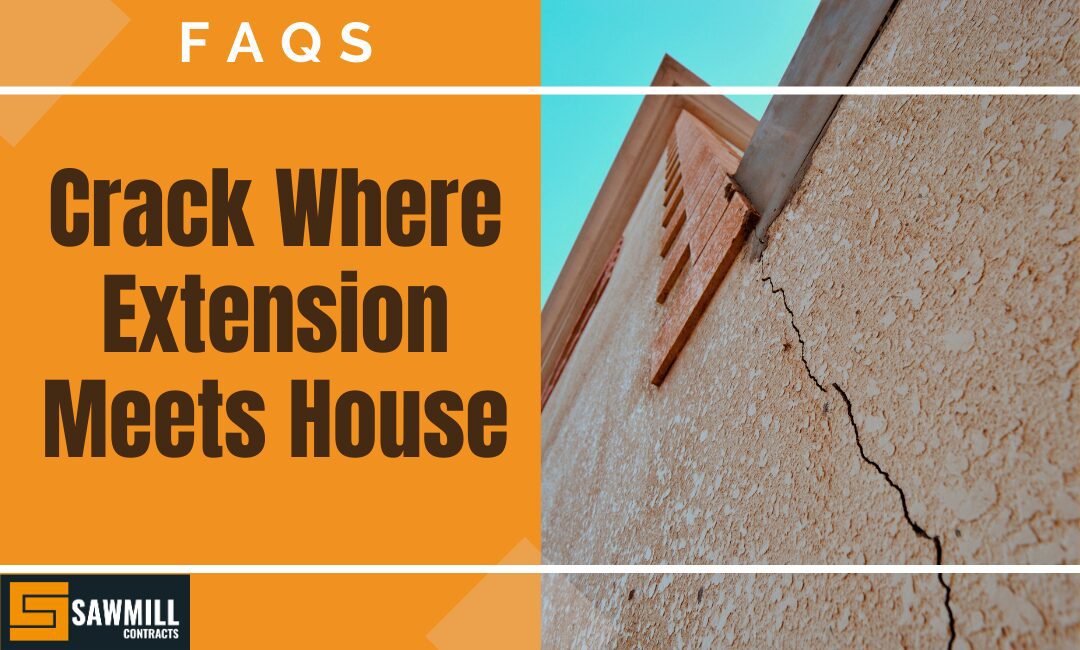After investing time and money into a house extension, the last thing you want to see is cracks forming where the extension meets the original structure. However, this is a common issue that many homeowners experience. These cracks may range from hairline fractures to more significant gaps, and they can be caused by a variety of factors. In this guide, we’ll explain why cracks happen, what you can do to address them, and how to prevent them from becoming a serious problem.
1. Common Causes of Cracks
Several factors can lead to cracks where an extension joins the main house:
- Natural Settlement: One of the most common causes of cracks is the natural settling of your new extension. Just like any new structure, an extension will experience some minor shifts and movements as it settles into its foundations. This can cause small, superficial cracks where the extension meets the existing structure.
- Different Foundation Types: Often, the foundations of the extension and the original house may be constructed differently. Older homes may have shallower or less reinforced foundations, while modern extensions usually comply with stricter building regulations, leading to different rates of movement between the two parts.
- Thermal Movement: Temperature changes can also cause materials to expand and contract. If the materials used in the extension are different from those in the original house, this difference in thermal movement can lead to cracks at the junction where they meet.
- Poor Construction Work: Occasionally, cracks can occur due to poor workmanship or inadequate connection between the two structures. If the brickwork or mortar wasn’t bonded properly, or if the materials used are incompatible, cracks may develop as the two parts of the building shift over time.
Avoid cracks by learning how to choose the right team in our guide to finding a reliable builder. To learn more, check out our blog post on how to find a builder for your house extension – click here.
2. Types of Cracks: When to Worry
Not all cracks are cause for alarm, but it’s important to understand the different types and what they signify:
- Hairline Cracks: Small, thin cracks (less than 1-2mm wide) are usually nothing to worry about. These are often caused by the natural settling process or minor temperature changes. You can fill them in with flexible sealant to prevent them from worsening.
- Structural Cracks: Larger cracks (wider than 5mm) or cracks that continue to widen over time may indicate a more serious structural issue, such as subsidence or inadequate support between the extension and the original building. In this case, it’s important to consult a professional.
3. How to Fix Cracks Where the Extension Meets the House
Once you’ve identified the cause of the cracks, there are a few methods for fixing them:
- Flexible Sealant: For hairline cracks caused by natural settlement, a flexible sealant is often the best solution. This material allows the structure to continue moving without opening up the crack again.
- Helical Bars or Wall Ties: For more significant cracks, helical bars or wall ties can be used to stitch the extension to the original house, reinforcing the connection between the two structures. This method helps to prevent further movement and provides additional strength. Ensure strong foundations with our guide on how to build foundations for a house extension. To learn more, check out our blog post on how to build foundations for a house extension
– click here. - Professional Structural Repairs: If the crack indicates a more serious issue, such as subsidence or foundation movement, you may need professional structural repairs. This could involve underpinning the foundation, installing expansion joints, or reinforcing the existing structure.
4. Preventing Future Cracks
To minimise the risk of cracks forming, it’s important to ensure the extension is built with careful attention to both structure and materials. Here are a few tips for preventing cracks:
- Matching Foundations: Make sure the foundation of the extension is compatible with the foundation of the original house. This can help reduce differential movement between the two parts of the building.
- Using Expansion Joints: Incorporating expansion joints in the design will allow the two structures to move independently without putting stress on the connection point. This is especially important for larger extensions or buildings made from different materials.
- Regular Maintenance: Periodically check the junction where the extension meets the original house for any new cracks. Catching them early and applying flexible sealant can prevent them from becoming larger issues down the line.
Conclusion
Cracks where an extension meets the original house are a common issue, but they can often be easily repaired if caught early. By understanding the causes and knowing when to seek professional help, you can ensure that your extension remains safe and secure. At Sawmill Contracts Ltd, we offer expert advice and repair services to keep your home in top condition. Contact us today for a consultation.

